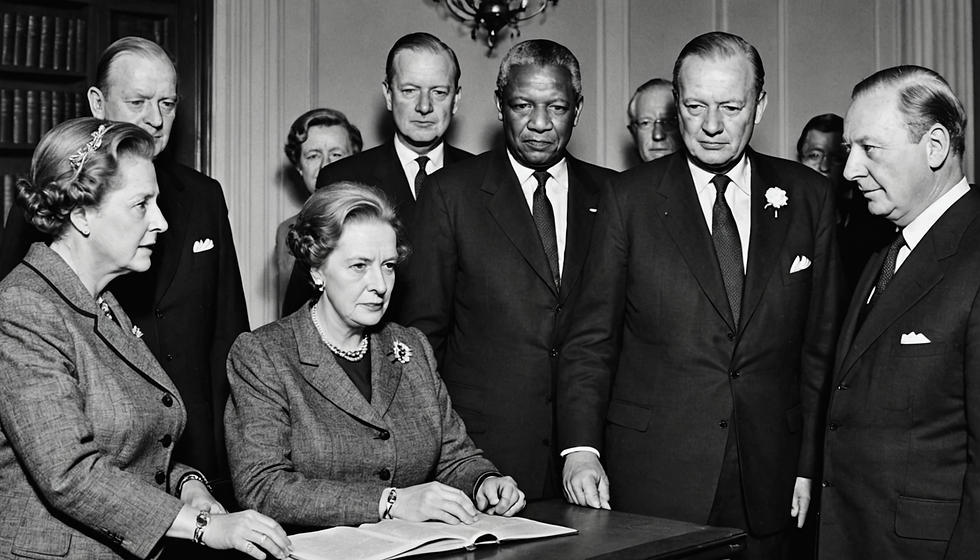What is the right health economic model for showing the value of this new medicine?
- R.M. Boylan

- Jan 20
- 4 min read
Steps for choosing the best model...

1. Understanding the Role of a health economic or pharmacoeconomic Model
A health economist and market access expert must first understand the purpose of pharmacoeconomic models. After we establish the clinical value of a new medicine, we must then prove its cost-effectiveness and/or value for the price. This is achieved through health economic modelling. We build models use cost and clinical trial data to achieve this.
Pharmacoeconomic and or health economic models are designed to evaluate the cost-effectiveness and overall value of a medicine compared to alternatives. The choice of your model will depend on the specific context, including the disease area, target population, and health care system characteristics. It may also vary depending on the market, geography, nation and economic reality of the nation and its population.
2. Critical assumptions in health modelling
Before building a pharmacoeconomic or health economic model, several critical assumptions must be established:
Target Population: Define the population for which the model will be applicable.
Time Horizon: Determine the time frame over which costs and outcomes will be assessed. Usually the health economic or pharmacoeconomic model should project the outcomes over a 3-5 year period minimum.
Perspective: Establish the perspective of the analysis (e.g., societal, payer, or healthcare provider). All payer types should be defined, government and public payer realities must be separated and modelled differently than 3rd party payers, private payers, insurers and/or managed care.
Clinical Effectiveness: Base assumptions on clinical data regarding the effectiveness of the intervention.
3. Model Building
The process of model building involves several steps:
Selection of Model Type: Choose between decision trees, Markov models, or discrete event simulations based on the complexity of the disease and treatment pathway.
Defining Inputs: Identify and quantify costs, health outcomes, and probabilities.
Data Sources: Utilize clinical trials, observational studies, and real-world data to inform model parameters.
Indirect comparisons: Data sources for indirect comparisons should be collected where clinical trial data does not exist.
4. Application of the Scientific Method
The scientific method guides the development of the pharmacoeconomic model:
Hypothesis Formation: Formulate hypotheses regarding the expected outcomes and cost-effectiveness of the medicine.
Data Collection: Gather relevant data through direct and indirect methods.
Analysis: Analyze the data to test the hypotheses and refine the model.
5. Direct & Indirect Collection of Costs
Costs can be collected through:
Direct Costs: Include medication costs, hospitalizations, outpatient visits, and diagnostic tests.
Indirect Costs: Consider productivity losses, caregiver time, and other societal impacts.
6. Medical Outcomes and Measurements
Outcomes must be clearly defined:
Clinical Outcomes: Measure effectiveness in terms of morbidity, mortality, and quality of life.
Health Status Measures: Utilize tools such as QALYs (Quality-Adjusted Life Years) and DALYs (Disability-Adjusted Life Years) to quantify health benefits.
7. Extensions of the Model
Models may need to be extended to incorporate:
Long-Term Outcomes: Consider the long-term effects of treatment.
Subgroup Analyses: Analyze variations in effectiveness and costs among different patient subgroups.
8. Validity Measures
Ensuring the validity of the model is critical:
Face Validity: Expert reviews to ensure the model is plausible.
Construct Validity: Evaluate whether the model accurately represents the real-world scenario.
9. Testing of the Model
Model testing involves:
Sensitivity Analysis: Assess how changes in input parameters affect outcomes.
Scenario Analysis: Evaluate different hypothetical situations to test robustness.
10. Price Elasticity to Demonstrate Value
Understanding price elasticity helps in demonstrating the value of the medicine:
Price Sensitivity: Analyze how changes in price affect demand for the medicine.
Willingness to Pay: Assess how much payers are willing to pay for the health benefits provided by the medicine.
11. Choice of Comparators
Choosing appropriate comparators is essential for context. If the health economic model is based on the wrong comparator, then the decision for the negotiation will be irrelevant for the decision-maker. The model must be based on what the payer/buyer is using. In the health economic model it must have real scenarios for the model to then be weaved into the budget impact model and negotiation agreement. It must include the standard of care in the therapeutic area of interest and other comparators being used. These 2 catergories:
Standard of Care: Compare against existing treatments.
Alternative Therapies: Include other relevant interventions in the analysis.
Conclusion
In summary, the process of selecting the best pharmacoeconomic model involves a systematic approach that incorporates critical assumptions, model building, data collection, analysis, and validity measures.
The model will be used as a decision analytic tool. Henceforth, it must be relevant and timely for decision-making. Our ultimate goal is to provide a robust evaluation of the value of a medicine in a specific market context, guiding decision-making for stakeholders in the healthcare system.
NIH, ISPOR, CADTH research best practices health economic modelling:
These are also references for the article and all my work is guided by the scholars.
References:
1). Bodenheimer, T., Grumbach, K. (2012). Understanding Health Policy: A Clinical Approach. McGraw Hill Lange Medical.
2). Brazier, J., Ratcliffe, J., Salomon, J.A., Tsuchiya, A. (2007). Measuring and valuing health benefits for economic evaluation. Oxford University Press.
3). Brunsson, Nils. (2007). The Consequences of Decision-making. Oxford University Press.
4). Crowley, P.H., Zentall, T.R. (2013). Comparative Decision Making. Oxford University Press.
5). Glied, S., Smith, P.C. (2011). The Oxford Handbook of Health Economics. Oxford University Press.
6). Hall, M.A. (1997). Making Medical Spending Decisions. The law, ethics & economics of rationing mechanisms. Oxford University Press, New York, Oxford.
7). Henderson, J.W. (2002). Health Economics & Policy. South Western, a division of Thomson Learning.
8). Hunink, M., Glasziou, Siegel, J., weeks, J., Pliskin, J., Elstein, A., Weinstein, M. (2001). Decision making in health and medicine: Integrating evidence and values. Cambridge University Press.
9). Lammers, S.E., Verhey, A., (1998). On Moral Medicine: Theological Perspectives in Medical Ethics, Second Edition. William B. Eerdmans Publishing Company, Grand Rapids, Michigan/Cambridge, U.K.
10). Neuman, P.J., Cohen, J.T., Ollendorf, D.A. (2021). The right price: A value-based prescription for drug costs. Oxford University Press.
11). Pharmafocus 2025. IQVIA.
12). Varvey, B. (2020). Principles of Clinical Ethics and their application to practice. Med. Princ Pract. 2020 Jun 4;30 (1): 17-28 doi: 10.1159/000509119.
13). Rhodes, R., Battin, M.P., Silvers, A. (2012). Medicine and Social Justice: Essays on the Distribution of Healthcare, Second Edition. Oxford University Press.
14). Rang, H.P., Dale, M.M., Ritter, J.M., Gardner, P. (1995). Pharmacology. Churchill Livingstone.





Comments